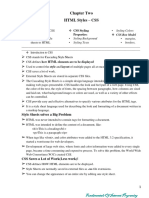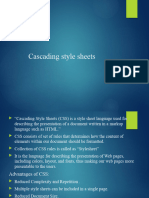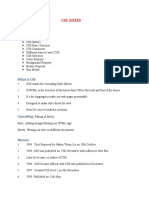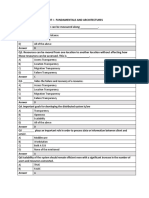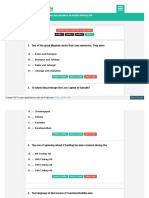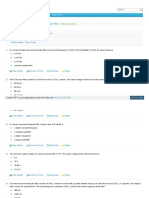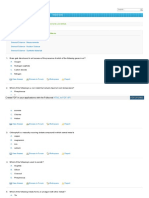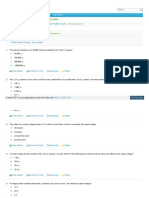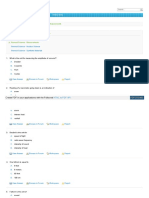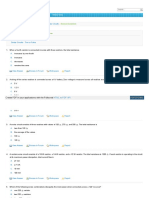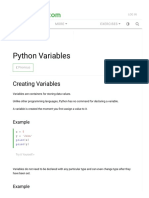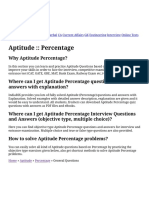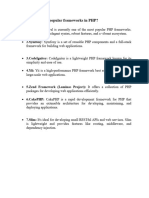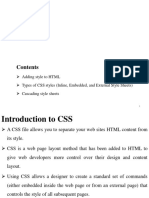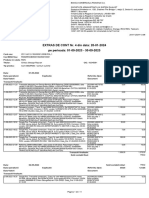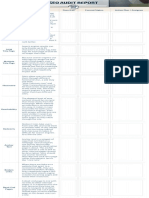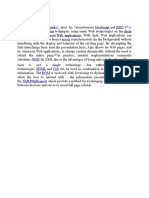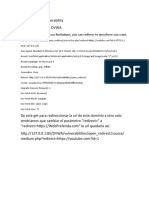0% found this document useful (0 votes)
9 views5 pagesCSS Syntax - GeeksforGeeks
The document provides an overview of CSS syntax, detailing the structure of rule sets which include selectors and declaration blocks. It explains various types of selectors such as universal, type, class, and ID selectors, along with properties and values used in declarations. Additionally, it covers grouping and nesting of selectors, as well as pseudo-classes and pseudo-elements for advanced styling.
Uploaded by
iraj shaikhCopyright
© © All Rights Reserved
We take content rights seriously. If you suspect this is your content, claim it here.
Available Formats
Download as PDF, TXT or read online on Scribd
0% found this document useful (0 votes)
9 views5 pagesCSS Syntax - GeeksforGeeks
The document provides an overview of CSS syntax, detailing the structure of rule sets which include selectors and declaration blocks. It explains various types of selectors such as universal, type, class, and ID selectors, along with properties and values used in declarations. Additionally, it covers grouping and nesting of selectors, as well as pseudo-classes and pseudo-elements for advanced styling.
Uploaded by
iraj shaikhCopyright
© © All Rights Reserved
We take content rights seriously. If you suspect this is your content, claim it here.
Available Formats
Download as PDF, TXT or read online on Scribd
/ 5











































